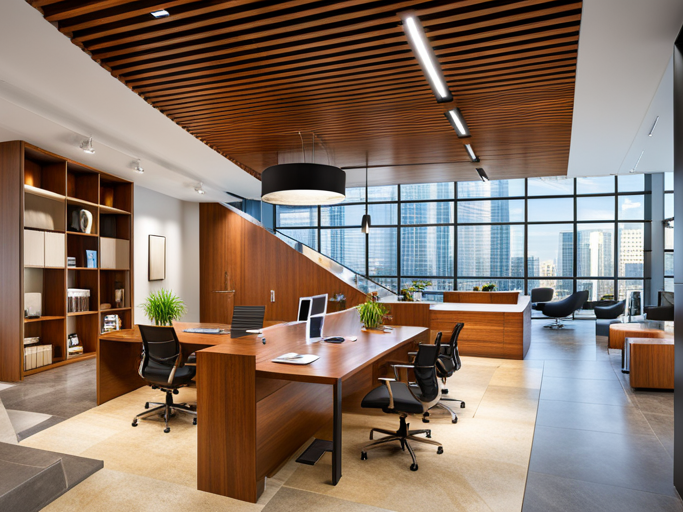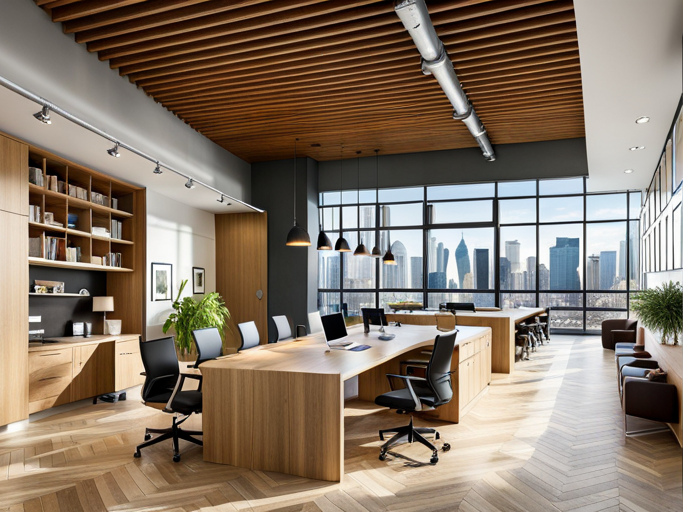The commercial real estate market is receiving increasing national attention this year in what is being billed as "The Commercial Real Estate Apocalypse", and for good reason: Americans are re-thinking their relationship with workplaces. This cultural shift could have far-reaching impacts for American workers, the broader economy, and cities and communities.
Here we examine how bad flooring decisions, often stemming from brutalist design specifications, lead to noisy, cold, industrial spaces that are utterly exhausting to be in.
What is going on in commercial spaces?
In the years since the COVID pandemic, American white-collar workers have been finding themselves in remote positions that zoom into digital workplaces. Meanwhile, commercial office spaces are remaining relatively empty. In a recent Gensler survey, office workers reported that there wasn't much welcoming them into the office, and modern office spaces simply aren't meeting their needs. These findings were particularly disappointing in part because many of these office spaces had already been renovated within the last ten years.
Bad flooring deters employees from rejoining the office
It seems clear that the newest architectural designs aren't serving employees with the spaces that they need to maximize productivity and creativity, and so what has gone wrong? Believe it or not, the answer could be pretty simple: the floors in commercial spaces are absolutely, abysmally terrible. Polished concrete subfloors and concrete subfloors with thin vinyl or industrial-carpet surface coatings are (1) acoustically inferior, (2) aesthetically industrial, and (3) represent well-known ergonomic hazards.
(1) Noise: Concrete floors exacerbate noise in open offices
In recent decades, open offices and communal workspaces have become the earmark of a trendy, flexible office culture. However, this approach has notable drawbacks when employees leave cellphone ringers on, or require private space for phone calls. Indeed, one misbehaved pet visitor could distract the entire staff for hours or more.
Unfortunately, where conference rooms blend into flexible workspaces, privacy is non-existent because noise travels so quickly. As a result, in spaces where group work is expected to be a benefit of returning to the office, eavesdropping peers could lead to more oppressive cultural overtones and subsequently, avoidance of the office.
Reducing sound transmission in spaces filled with concrete is a difficult task, and compliant, solid hardwood floors are a natural solution.
Concrete subfloors are notorious for cracks and difficult,
if not impossible, repairs.
(2) Brutal aesthetics set basic comforts aside
While industrial, concrete buildings can make a strong utilitarian statement, and give a distinctly modern impression, the spare aesthetics do little to welcome employees or guests--who might prefer to stay at home where comfort is higher priority. Plus, cracks and repairs can certainly impact the overall aesthetic.
"With the advent of working from home, it is really astounding that interior designers still lean towards polished concrete. It is as if folks who work from home might choose to zoom from their garage on the concrete. Obviously, people prefer to be in their homes on more compliant flooring." - Bobby Z. Pittsburgh, PA.
Nevertheless, award-winning commercial office designs (occasionally built to house the firms themselves) prominently feature polished concrete flooring. Sometimes, these choices are serious, brutalist design decisions--seeking to make a mark in architectural history. Sometimes, concrete is simply cheaper than any alternative -- a virtue also discovered and utilized by big box stores and mall storefronts nationwide.
Discovering cost-effective, aesthetically pleasing, durable flooring options, like solid wood Steller Floors, can substantially improve the interiors of commercial office spaces.
(3) Exhaustion ergonomics
There's no question that today's white collar workers are wearing thin from struggling in a difficult economy. Working on concrete translates mental exhaustion to the physical. Take a well-known example: at trade shows, it is well-known that concrete floors sap participant energy and engagement, and so vendors spend lavishly to provide compliant flooring for prospective customers.
Shouldn't employers be giving the same ergonomic considerations that they provide prospective customers to their employees, who often spend 40+ hours weekly in employer-provided workspaces?
|

1. A commercial office space imagined by AI with an exposed concrete floor is notably colder and noisier --even in our imaginations.
|
 2. A similar commercial office space imagined by AI with a wood floor is distinctive and evidently more welcoming. 2. A similar commercial office space imagined by AI with a wood floor is distinctive and evidently more welcoming.
|
Cost-effective, green flooring solutions are urgently needed in commercial office spaces -- cue Steller Floors.
In order to lure workers back to the office, interior designers, architects, and building owners will need to change their flooring philosophy in 3 substantial ways:
First, we must choose functional flooring options that literally support employees' health and productivity. That means reducing noise transmission, increasing access to natural beauty, and offering more ergonomically friendly, compliant flooring options.
Second, we can't ignore the impact that flooring has on the planet. Using more compliant materials like LVP may support employee's backs, but represents a larger, existential threat to the planet. Hardwood flooring materials that can be used and re-used are non-negotiable in spaces that support green building.
Finally, we need to choose flooring that has cost advantages over time. Polished concrete often appears to be the cheapest option because it has fairly low up-front costs. However, over time, treating fissures and cracks, and annually adding epoxy resins and polishes all adds up.
With options like Steller Floors, which float over concrete subfloors, you get excellent commercial advantages. Steller solid hardwood floors are also high quality, American-made and feature simple installation and repairs. For these reasons, we uniquely combine wood floor aesthetics, reduced noise transmission, and excellent lifetime value.
Ready to get started with Steller Floors?
Our team of experienced professionals have worked tirelessly to develop these new floating flooring solutions with sustainability in mind. We believe that by creating wood-based commercial flooring products that look great now and can also stand the test of time, we are helping customers get the projects completed faster with fewer stressors along the way.
At Steller Floors, we are looking forward to continuing our mission of advancing wood floor innovations in 2023 and beyond. We are excited for you to join us on this journey as we create beautiful, sustainable solutions for your flooring needs.